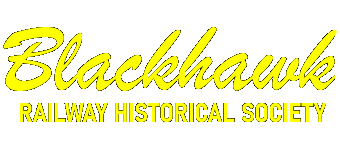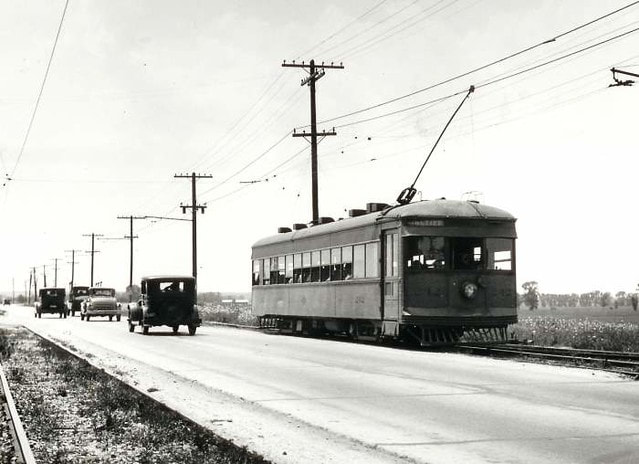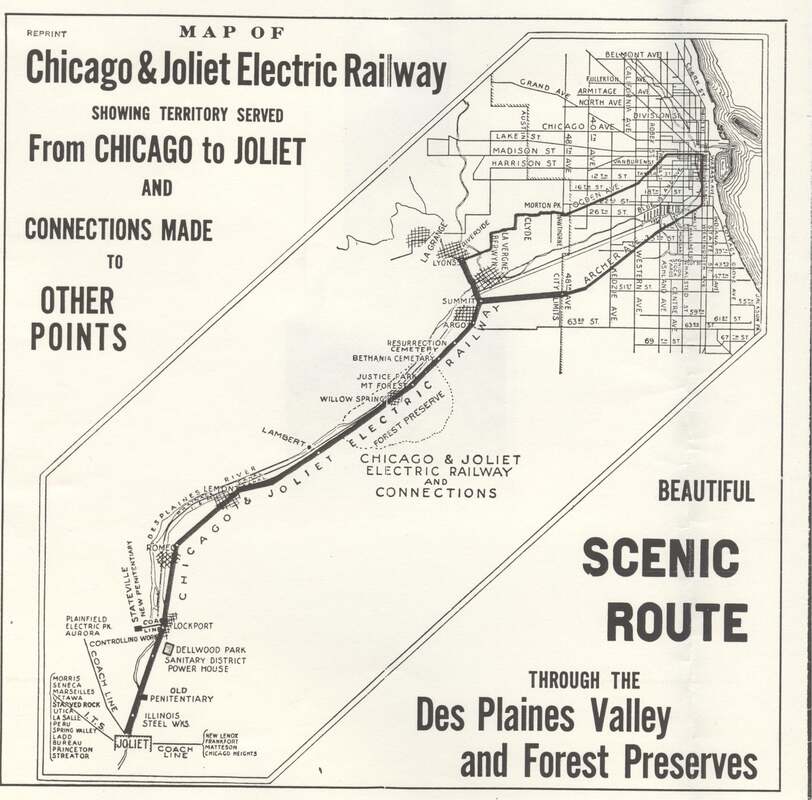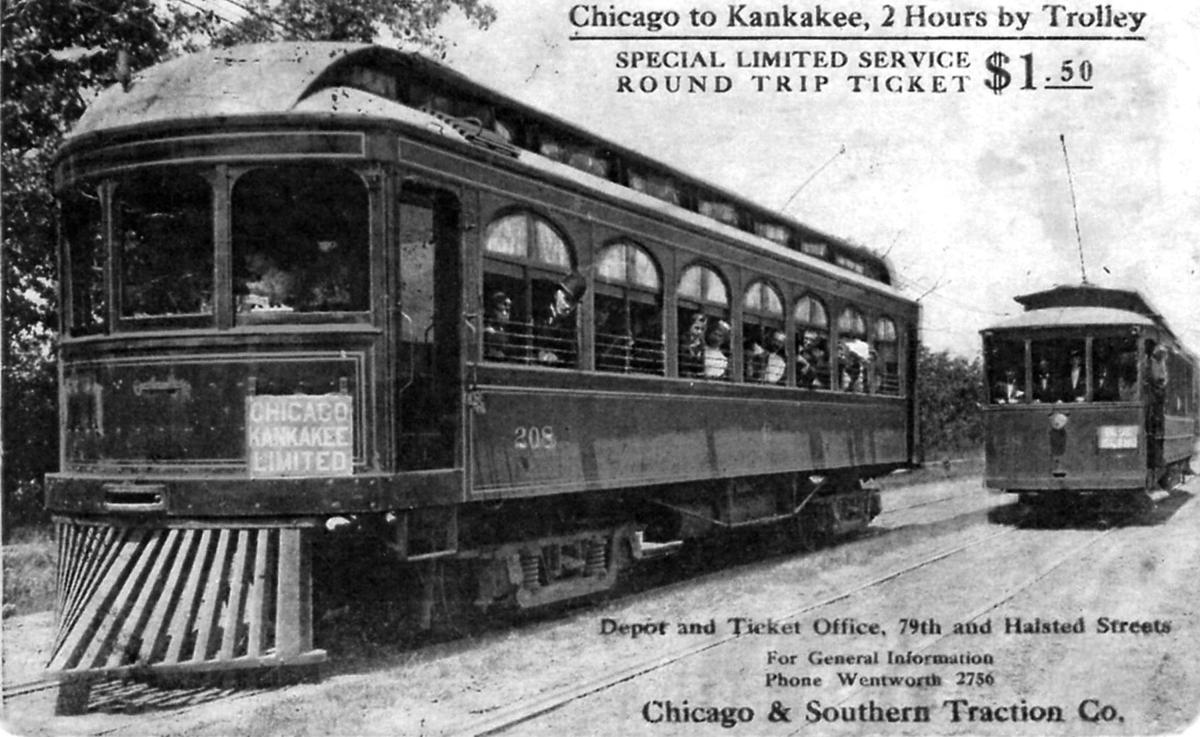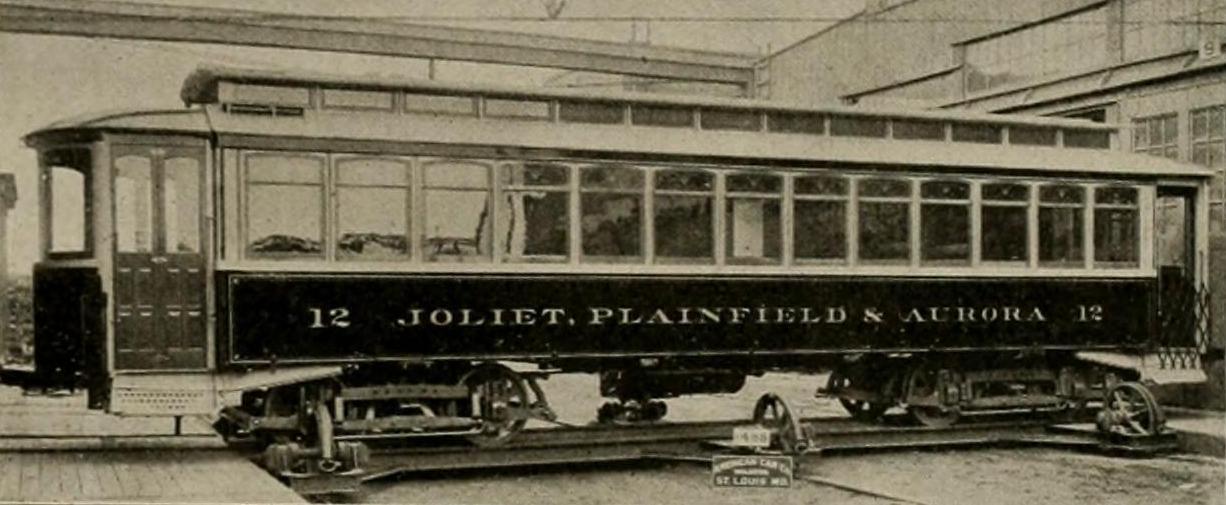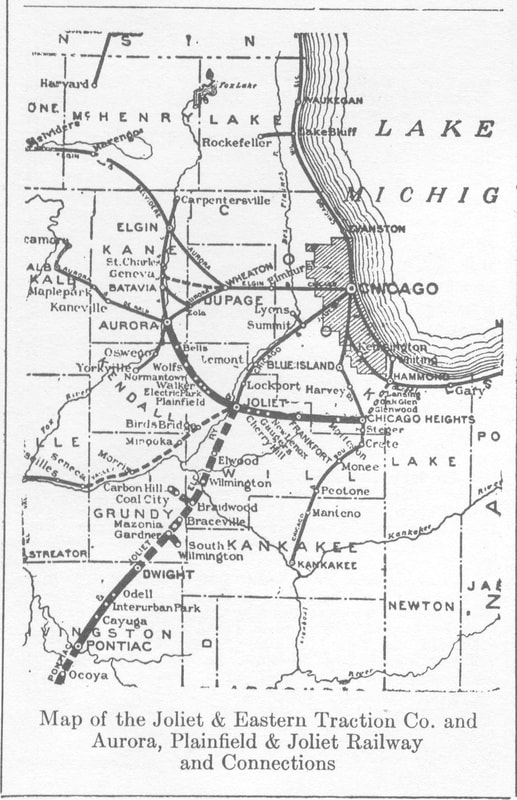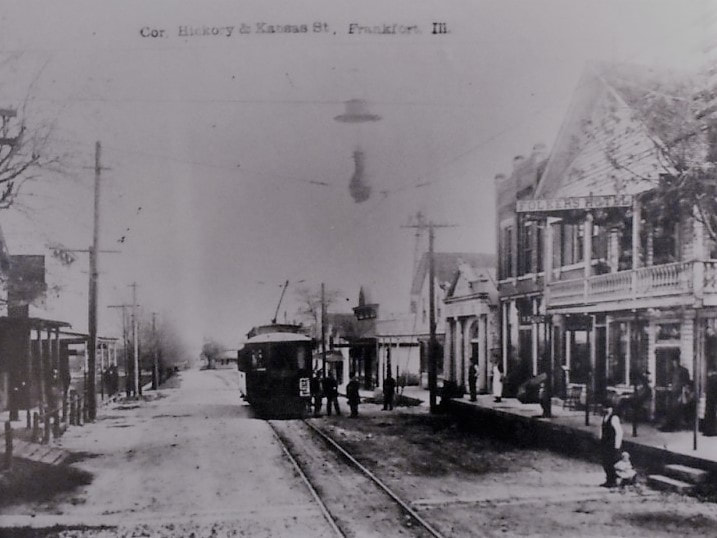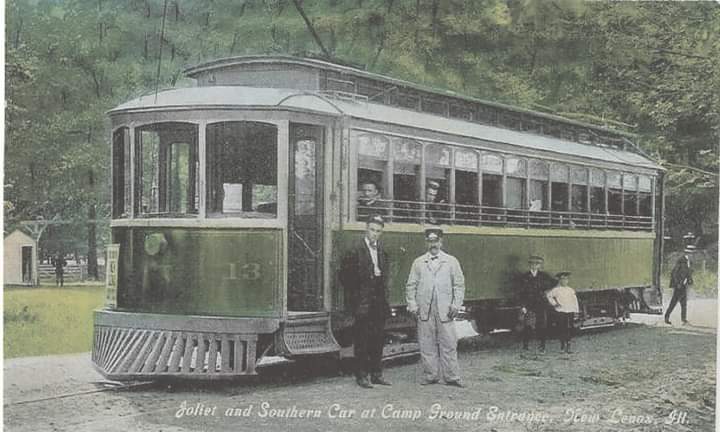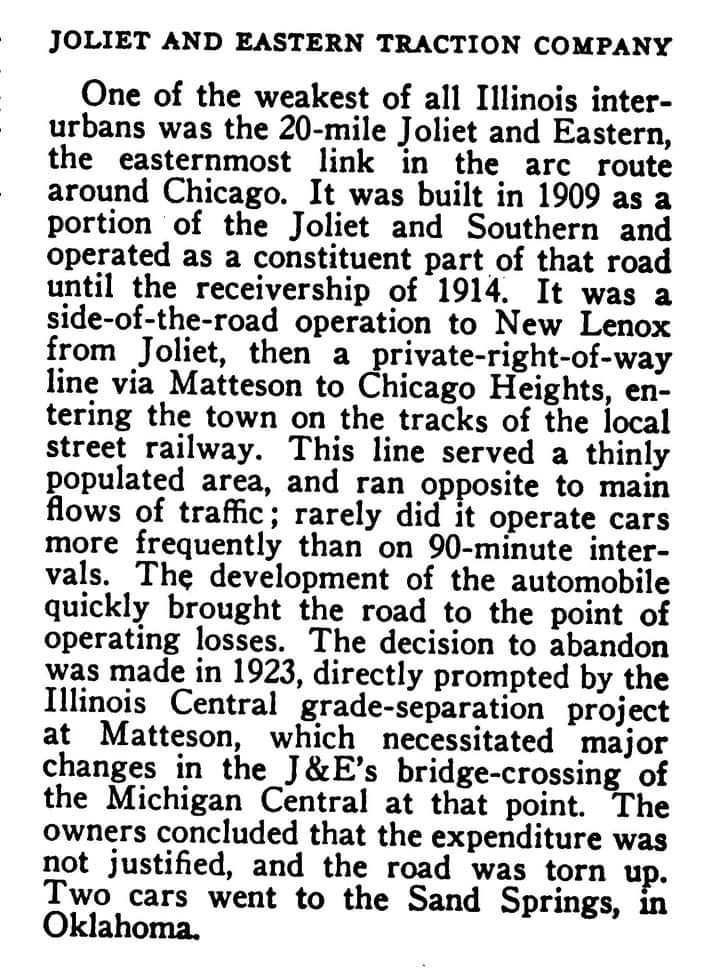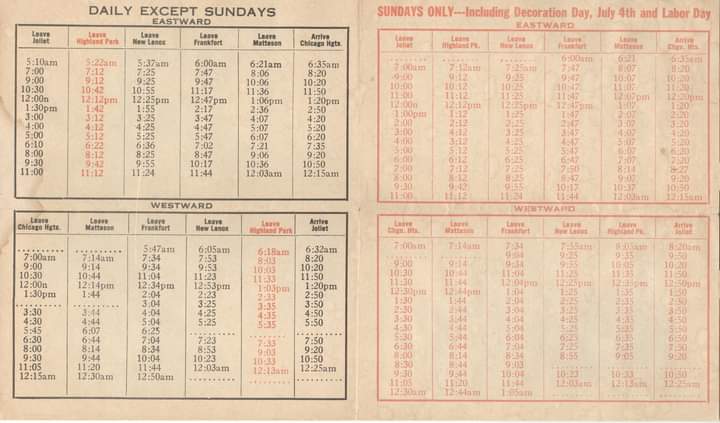The Railroads of Will County
Interurban Railroads
By 1880, the concept of rural electric railroads connecting cities and towns had emerged across the United States. Electric railroads known as streetcar lines were built to serve populated districts where a demand existed for additional transportation facilities. Other electric railroads connecting two or more towns or cities were known as interurban lines, These railroads often used private rights-of-way, and were frequently were placed along exiting highways and railways. Although two recessions, and the development of improved highways and increased personal automobile ownership, eventually halted their development, several dozen interurban lines were built throughout the Midwest.
Most lines ran from ten to forty miles, providing more frequent service than competing steam railroads, although at lower overall speed. Most used 600-volt direct current electricity from overhead wires. Interurban cars were constructed of wood, but later cars were constructed of steel. Interurban line construction ran as much as $10,000 per mile to construct, and most companies used a single track as traffic rarely required double track. Relatively sharp curves and various municipal limitations usually restricted interurban freight operations, making passenger earnings essential.
By as early as the 1920s and going into the early 1930s, improved roads and political apathy, along with a rapidly declining physical plant, all combined to push most of the interurbans out of business. A few hung on after the end of the "Interurban Era" either because of their utility as commuter carriers, or they had enough freight traffic to survive without passengers.
All of the interurbans that traversed Will County were abandoned and very few clues to their existence remain today.
Most lines ran from ten to forty miles, providing more frequent service than competing steam railroads, although at lower overall speed. Most used 600-volt direct current electricity from overhead wires. Interurban cars were constructed of wood, but later cars were constructed of steel. Interurban line construction ran as much as $10,000 per mile to construct, and most companies used a single track as traffic rarely required double track. Relatively sharp curves and various municipal limitations usually restricted interurban freight operations, making passenger earnings essential.
By as early as the 1920s and going into the early 1930s, improved roads and political apathy, along with a rapidly declining physical plant, all combined to push most of the interurbans out of business. A few hung on after the end of the "Interurban Era" either because of their utility as commuter carriers, or they had enough freight traffic to survive without passengers.
All of the interurbans that traversed Will County were abandoned and very few clues to their existence remain today.
Chicago & Joliet Electric Railway
|
Joliet, Plainfield & Aurora Railway
|
